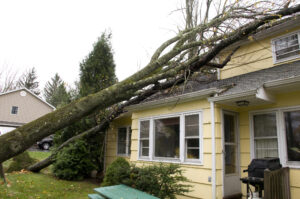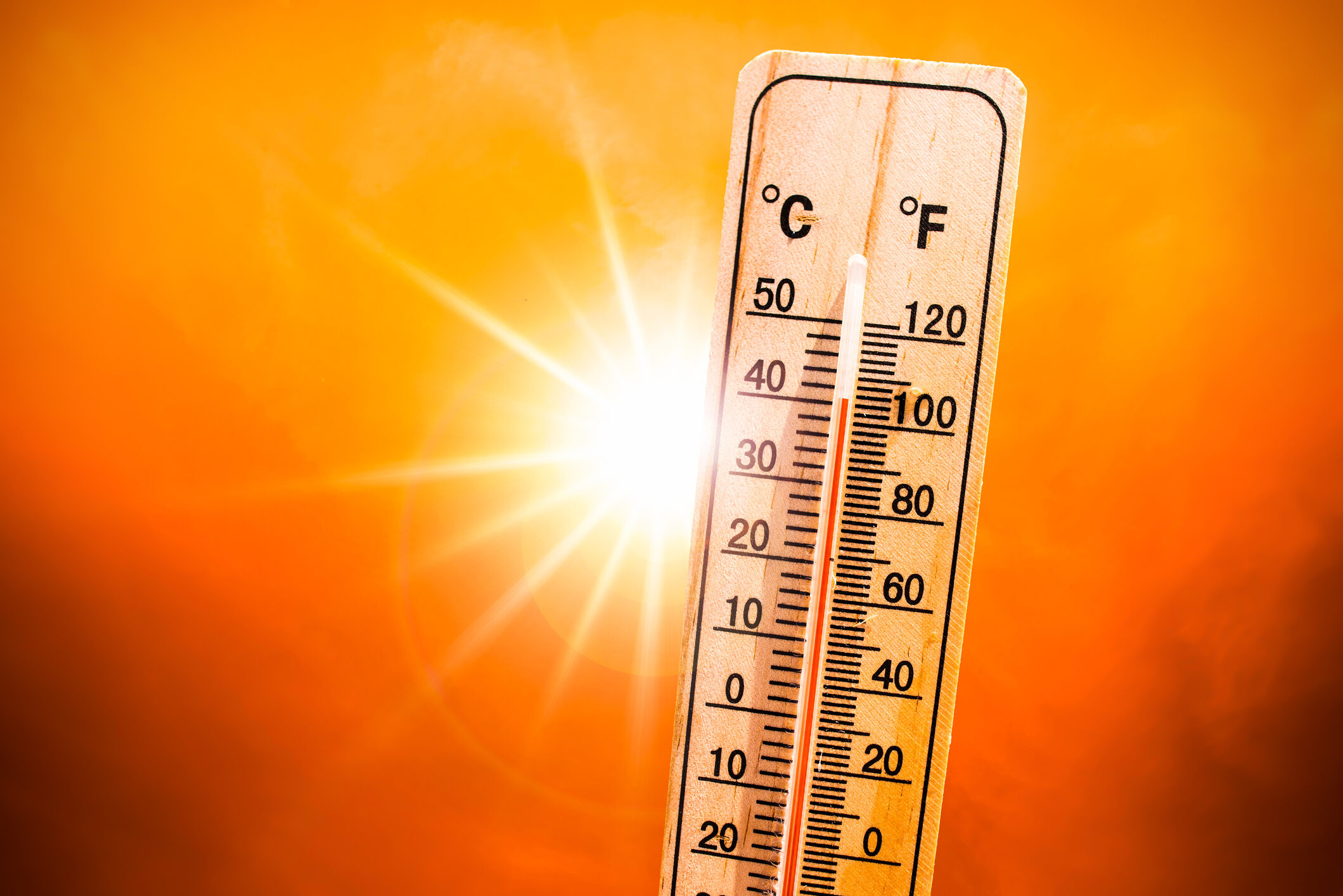Baselines, normal, and normalization
It is hard to say what is ‘normal’ these days.
As wildfires devour the planet’s forests and record-breaking storms tear through the alphabet, I have heard the same question over and over:
“Are we at the ‘breaking point?’”
My answer is no. It had better not be the breaking point because we are only at the beginning of many years of a warming climate.
This actually is a warning point — an alert that we have to do things differently if we are going to thrive in the coming decades.
Telling the future

It’s hard to believe, but eight years have passed since Hurricane Sandy roared along the East Coast. (iStock photo.)
Out of curiosity, I went back and looked at a couple of articles and blogs from a different time. I found a 2011 piece in which I pondered a similar question from people: “Should we expect that everything that happened this year will continue happening in the future?”
I’d written that article at the end of the 2001–10 decade. I was taking exception to the “new normal,” because the term suggested we had shifted from an old normal to a new normal, and now we just had to adjust. I wrote, “In 10 years we will have the next new normal, then another in 20 years. If we look at our emissions of carbon dioxide, which are the primary cause of warming, any progress we make on reducing emissions is in the spirit of ‘they are not as high as they could be.’”
The same is true today.
Since 2020 signals the end of a decade, we in the Great Lakes Integrated Sciences and Assessment Center have been talking about changing the baseline on which we calculate climate trends. We have been using a baseline of 1951-80. It can be reasonably argued that 1951-80 is a time span that precedes the acceleration of the warming trend; hence, it is defensible as a standard.
A 30-year average of weather is a common definition of “climate.” Using 1951-80 meant that there was an entire 30-year record from 1981-2010. Hence, we compared the most recent 30-year climate at the time to the previous one. With the arrival of 2020, we could shift everything a decade and stay “current.” We could calculate even newer new normals, at least in the sense of the normal as an average.
Shift change

William Riley looks at a brush fire at LA’s Sepulveda Basin in October 2019. (Photo by Kevin Lendio.)
This shift challenged my sensibilities as a scientist, especially a scientist who tries to communicate about the climate. First, shifting the baseline would change the basis on which we had been calculating trends. Since the planet is warming up, the new baseline would be at a higher temperature, and the trends would be relatively smaller. Second, shifting the baseline seems like a communication challenge to practitioners responsible for planning and management decisions.
This issue of shifting the baseline, however, is as much of a behavioral and human issue as it is a scientific issue. We reconsider and re-baseline things all the time. A noted paper on shifting baselines was written by a fishery scientist, Daniel Pauly in 1995. Since fishery populations have been in a general decline, the shifting baseline obscures, perhaps, the size of the decline compared to historical populations.
The idea of a shifting baseline is often cited as how humans adapt to difficult, changing conditions. It is a type of reframing, placing current conditions into a perspective where they seem normal – normalization. Current conditions are what you know; therefore, you learn to adapt to those conditions. We are doing that during the pandemic, wearing face masks and taking virtual meetings.
In my classes, I ask students to think about that 30-year average as the definition of climate. Originally, I intended to challenge the definition as being too short and too focused on weather. Oceans and ice are at the heart of climate and climate variability, and I was imagining answers to that effect.Surprisingly, many students advocated for shorter averaging periods, perhaps 10 years. They recognized that the temperature was changing so fast that it changed too much over 30 years, rendering any average meaningless. They said planners and managers would prefer a baseline that is meaningful to what they know, not a scenario from half a century ago. (They also said that while a 1951-80 climate might be relevant to me, it was not very relevant to them. Sort of like the Andy Griffith Show.)
One thing I knew for sure. They had heard the material in my class . . . which they were then framing and baselining from a different point of view.
To re-baseline or not to re-baseline? That is the question

Rood wonders: As we adapt to climate change, will we become so accustomed to a new baseline of extreme weather that we miss opportunities to avert further disaster?
In a recent article in Vox, David Roberts wrote about shifting baselines and climate change. He argued that people would react to shifting baselines by accommodating more and more climate disruption, and they would diminish the dangers that could be averted by reducing carbon dioxide emissions.
Shifting the baseline, however, seems natural and contributes to an individual’s ability to cope. My students, indeed, argued several practical advantages to re-baselining. There is no way to stop it from happening.
And so we face a vexing paradox: The essential need to limit climate change by carbon dioxide management (perhaps maintaining the historical baseline) and the essential need to adapt to climate change (perhaps shifting the baseline).
Humans are not especially good at maintaining two positions, two paths of action, that seem both contradictory and true.
But if we do not change both the ways we approach emerging climate-related disruption, and what we are doing to limit that disruption in a hundred years, then yes, perhaps we are at a breaking point.
In terms of what is normal, and the baseline to which we compare, the challenge is maintaining an absolute baseline for the future and a shifting baseline for the present.




Eugene (Gene) Pait - 1972, 1978, 1981
Hi Ricky;
I’m happy to see that you have done well and are a professor at the University of Michigan.
It has been a long road since Cary High School.
Since you are a climate change expert, I am interested in your views regarding historical climate change and what we are currently experiencing. As I understand it, we are currently in an interglacial period that began roughly 20,000 years ago. During that time, the globe has been progressively warming, the glaciers have been retreating and the ocean levels have been rising. During approx. 15,000 of those years, humankind’s contribution to climate change must have been minimal. While our current pollution rates are certainly accelerating the warming of the globe, could we not, in the big picture, be experiencing the beginning of the terminus of the current interglacial period and will (geologically speaking) soon see temperatures decline as we approach another glacial period?
Thanks for your input.
Take care
Gene
Reply
Richard Rood
Hi Gene,
Indeed, what have you been doing for the past 50 years?
You state your question very well. I only have time for a brief answer, now, but maybe we can have a longer discussion over the next few weeks.
Historical, or perhaps prehistorical, climate change is an important part of our field of study. The ice ages and ice age cycles are the most widely known and widely discussed aspects of historical climate change. Indeed, “we” figured out that there must have been glaciations in, maybe, the 1700s … I don’t remember for sure. By the late 1800s, scientists were writing about the role of CO2 in both the ice ages and the temperate periods that separated the ice ages.
Since the last ice age, it has not always been warming. There have been warmer and cooler times, which I mention, because our efforts to understand those fluctuations help us puzzle together the energy budget of the planet.
As a caveat, though we have observations that tell us about these past climates, in no case do we have the number and fidelity of the observations we have had in past 60 years. The modern observations are at the center of our modeling capabilities, but that is a different comment.
I usually frame the answer to your question like this. The Earth’s climate is determined, in a gross sense, by the energy balance of the planet. Meaning, we get energy form the Sun, we release energy to space, and we store energy in the oceans, land, ice, and atmosphere. The basic principle of climate science is to measure and calculate the energy budget. It is, therefore, a basic accounting problem.
If we were to just look at the variability of the energy from the Sun, we should, in fact, be in the beginning of cooling period for, perhaps, the next ice age. If we take 1750 as a reference time, prior to the industrial revolution, and then we do that accounting of the different components of the energy budget, we find 1) the accumulation of heat because of the increased carbon dioxide far overwhelms the cooling that we might be experiencing because of the changes in solar energy, and 2) the vast majority of that energy is being stored in the ocean, which is seeing a relentless increase in its heat content.
So on one hand, you might say we have intervened in ice age cycle, on the other hand, we have intervened WAY too much.
If you are interested, on my sort of personal web site, https://openclimate.org/ , I have a few introductory lectures and resources collected
https://openclimate.org/course-collection-climate-change-science-short-introduction/
Nothing specific on the ice ages yet, but there will be by next May, when I expect to have all of my course materials online.
Hope that starts to answer your question
ricky
Reply